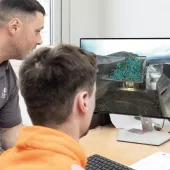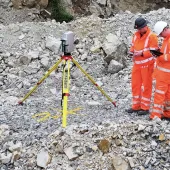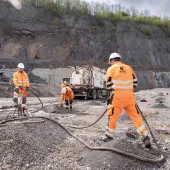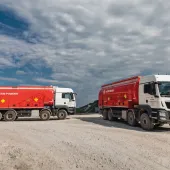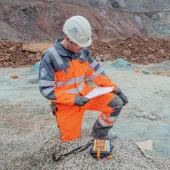Air-Decking and the Environment
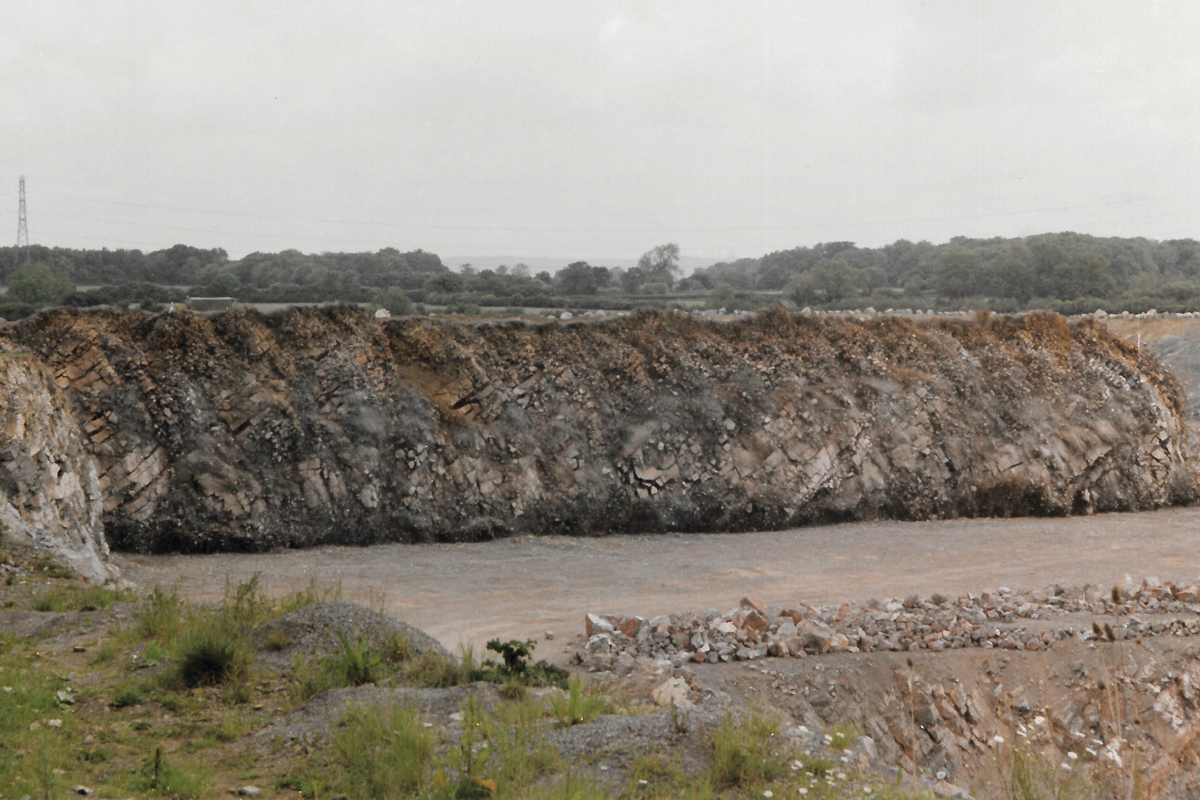
First published in the April 2020 issue of Quarry Management
Steve Gilmartin, director of Varidrill Ltd, reveals how air-decking can reduce CO2 emissions and provide other benefits in quarry blasting
The issue of climate change and reducing our carbon footprint is high on everyone’s environmental agenda. This article explains how the carbon dioxide (CO2) produced in a quarry blast can be calculated and offers some ideas on how it can be reduced. For simplicity, ANFO has been used as the main explosive. Bulk and cartridge explosives will give slightly different results, but as ammonium nitrate forms a large percentage of most commercial explosives, the following will provide a reasonable base to work from.
Explosives work by producing large quantities of gases. ANFO mixed in the standard proportion of 94% AN to 6% fuel oil will produce water in the form of steam, nitrogen and carbon dioxide. The quantity of CO2 produced can be calculated by adding up the molecular weights of the chemical reaction between the fuel oil and ammonium nitrate. Thus, for every tonne of ANFO used, 176kg of CO2 is produced.
As a practical example, a quarry producing 1 million tonnes of rock per year, using ANFO with a blast ratio (BR) of 7 tonnes/kg, would require 143 tonnes of ANFO, producing around 25 tonnes of CO2.
However, if the BR was at the lower end, eg 4 tonnes/kg, that would require 250 tonnes of ANFO, producing some 44 tonnes of CO2, a 76% increase in emissions. Thus, the BR can have a significant impact on the carbon footprint as well as fragmentation.
Any well-run quarry should already be maximizing its BR to ensure optimum fragmentation, good floor conditions, face stability and to reduce its carbon footprint. But has air-decking been considered?
When explosives are detonated in a blasthole they produce a single high-amplitude stress wave which crushes the blasthole and moves further into the surrounding rock, producing a crack mechanism. During or after the stress wave propagation, high-temperature/pressure gases assist and extend the crack formation and produce the expansion and movement of the rock mass. The blasthole pressure produced by commercial explosive is far in excess of that required to fracture the rock, so if explosive weight can be reduced without compromising fragmentation, floor conditions or final wall stability, this would offer advantages to the quarry operator.
By incorporating an air column (air-deck) above or within the explosive column, secondary or multiple stress waves are produced which extend the duration of their action, thus increasing the extent of crack propagation.
The reduced blasthole pressure caused by the air-deck is still capable of creating an extended fracture system plus sufficient high-pressure gas to obtain the desired amount of ground movement. The lower peak blasthole pressure reduces the loss of explosive energy associated with excessive crushing of the rock adjacent to the blasthole.
Air-decks can be created at any point down the length of the blasthole simply and effectively by using gasbags. Gasbags are high-strength balloons capable of ‘locking off’ a blasthole and bearing heavy explosive loads for a long period of time. They consist of an outer polypropylene bag, and an inner ‘balloon’ containing an aerosol. They are activated by pressing a button on the aerosol (easily accessible through the wall of the balloon) and lowered to the desired depth in the borehole using a tape or string hooked on to a plastic loop on the bag. A built-in delay allows sufficient time to get it into position. A sharp tug on the string breaks the loop so the hook can be retrieved.
As an environmental aid, a simple air-deck between the top of the explosive column and the stemming is easily achieved by stopping explosive delivery into the hole, for example 2m below the normal column length. The hole is sealed with a gasbag at normal stemming height then stemmed off on top of the gasbag (fig 1). In the case of ANFO in a 115mm hole, this will reduce the explosive by about 16kg per hole or about 18% in a 15m hole with a corresponding reduction in CO2 emissions.
Another topical consideration in these days of changing weather patterns is the considerable effort being put into sea defences, which means an increase in the requirement for armour-stone. Armour-stone production can be successfully achieved using a base charge of high explosive and creating a large air gap by positioning a gasbag at stemming height (fig 2). Typically, this achieves rock sizes from 6 to 15 tonnes. If necessary, two decks with air gaps can be created to achieve intermediate rock sizes (4 to 8 tonnes). A few trial holes will establish the optimum charge and stemming height.
Environmental considerations are not the only reasons for using gasbags. A similar technique to that used to create armour-stone can be employed when pre-splitting to create smooth, stable final walls. A simple, quick and cheap method is to use air-deck techniques where about 10% of the hole is filled with explosive and a gasbag is placed at about 2m from the top (depending on the competence of the rock). Experience has shown that the spacing between holes can also be increased compared with traditional detonating-cord methods.
Water is often a problem in blastholes, particularly if bulk ANFO is being used. Sealing off up to 2m of static groundwater in a borehole can be very effective. The shockwave from the explosive creates a pulsed infusion effect through the water which breaks out the toe.
Gasbags can also help in MIC reduction where vibration is a problem. Instead of decking the holes using chippings, a gasbag can create an air-deck. The explosive will work within this air-deck instead of having ‘dead’ areas within the hole as would happen when chippings are used. Gasbags can also be used to seal off cavities or to create extra confinement within holes as an added precaution in sensitive areas, such as close to power lines.
Footnote
Stemtek Ltd were founded in 1995 by a group of blasting engineers from varied backgrounds in the minerals industry, with the aim of supplying alternative products and solutions to make blasting operations safer and more cost-effective, as well as providing a source of independent advice. Nick Astley was managing director of Stemtek from the beginning until his untimely death in 2014, after which another founder member, Julian Cleeton, continued to run the business to the present day. However, as from this month [April 2020], Julian Cleeton is handing over the supply of gasbags and other associated shotfiring equipment to Steve Gilmartin, trading as Varidrill Ltd, in order to concentrate on his work as an assessor, trainer and auditor. Steve Gilmartin can be contacted on tel: (07976) 558114; or email: steve@varidrill.co.uk
- Subscribe to Quarry Management, the monthly journal for the mineral products industry, to read articles before they appear on Agg-Net.com


